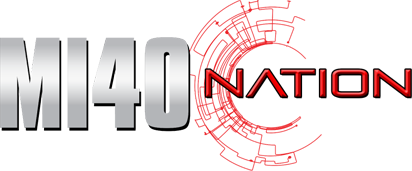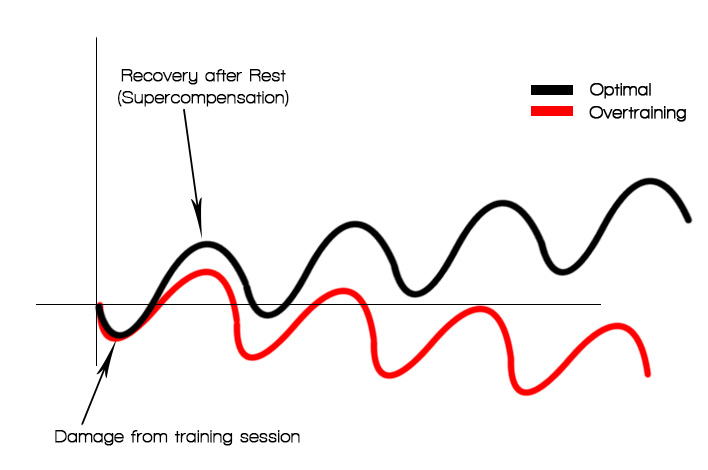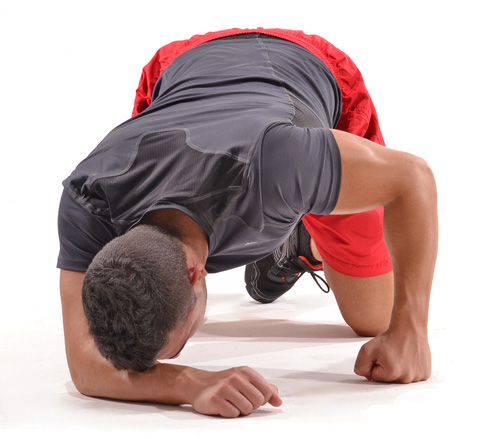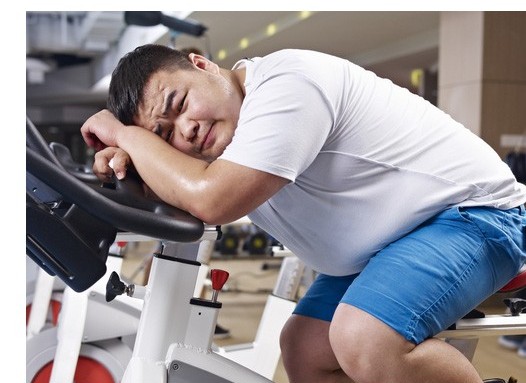Interview Q&A Series with Ben: Intensity vs. Volume
Question: “Let’s say we have your average trainee who works out four of five times a week, working each bodypart …

Question: “Let’s say we have your average trainee who works out four of five times a week, working each bodypart …
When it comes to body composition omega-3s are the top fat to consume. Unfortunately for most we get far too …
MI40 Strength Coach Adam Miller coming at you with an intro into the world of powerlifting… and how you can apply the MI40 principles to get stronger, faster…
In preparation for writing this article, I wanted to see what exactly was written out on the web when it …
Key Point Summary: – There are 5 ‘levels’, or stages, you must implement IN ORDER to optimize fat loss. – …
Question: “Is there an optimal amount of Time Under Tension (TUT) to shoot for each set?” When trying to maximize …
Did you know that your body is approximately 90% bacteria and only 10% human? From birth to death, our gut health is affected by various environmental factors. New cutting-edge research suggests that simple changes in gut bacteria may actually lead to drastic weight gain and increase markers of disease! Here’s what you need to know to be on the right side of gut health for improved wellness and body composition…
The deadlift may be the most misunderstood exercise in the gym. MI40 Strength Coach Adam Miller drops by to save the day with important insight into what exactly we should be trying to accomplish during this most mighty of lifts. Many gallant lifters fail to ever utilize the deadlift to its true potential due of a lack of biomechanical understanding… give this article a read and let Coach Adam break it down so you can tame the beast by mastering execution…
Not all fats are created equal. Put simply, there are good fats and bad fats: the so called unsaturated and …
Looking for lazer focus and unabated energy during tough workouts? Tyrosine could be the superamino you need to swoop in & save the day…
What if I told you there was a starch that increased insulin sensitivity, preserved muscle, and helped burn body fat? …
So you’ve dieted hard, and trained even harder. Your mind and your body have been battered and depleted from the …
Of all the giant sets, drop sets, lactic acid sessions, power days, hack squats, low carb days, contest prep hurdles, and steady state cardio sessions – on our world, none is quite as challenging as taking time off.
Whether competing or not, in our quest to be the best version of ourselves, or the best in the world period, we often become consumed by the sport of bodybuilding. We frequently throw caution to the the wind and engage in whatever we believe it takes to get the body we desire. But just as orthorexia can be impractical or dangerous, so too can a relentless desire to train.
Quite possibly the most underutilized growth technique in a bodybuilders arsenal is the ‘deload’, or training break. These respites can allow the mind and muscle time to reset and prepare for progress.
Overtraining
In our quest to continually challenge ourselves and push past our comfort zones, we have forgotten (or may not be aware) that overtraining is actually a real thing. Known in the literature as overtraining syndrome (OTS), it’s when training load exceeds your recovery capabilities.
We must however be careful when discussing this as the above statement is nuanced and we must tease it apart to truly understand what overtraining is, rather than fall victim to a war of semantics.
The goal of any exercise program is to overload the body and force it to adapt. What separates training from overtraining, is repeatedly pushing the body past its ability to adapt. The image below should help shed light on this point.
The black line represents the aim of normal training — damage the body, then let it recover to a level above where we started. The red line represents the effect of overtraining, where we keep pushing our body without giving it enough time to recover, which inevitably leads to regression.
This is what happens when we train for too long and too hard. Despite our best attempts to recover via sleep, nutrition, and supplements, the body just cannot recover – like taking one step forward and two steps back.
The Signs and Symptoms
On a graph, it is easy to spot OT, but in practice it is not so simple. In medicine and in the literature, overtraining syndrome is accompanied by a number of signs and symptoms.
Let’s take a look.
Psychological
There are a number of common psychological symptoms that accompany OT, and they have the benefit of being very easy to identify. Irritability is a very common response to excessive stress. This can mean a rise in temper or reduced patience with everyday tasks.
Aside from irritability, fatigue is another common symptom. Drowsiness throughout the day, despite having had plenty of sleep the night before can all be signs of fatigue and OT. Along those lines, sleep disturbances can also be caused by overtraining. Waking up in the middle of the night and not being able to get deep, recuperative sleep can wreak havoc on your gains.
An often frustrating response to excessive training is a resulting lack of motivation to train, or even go about your daily activities. Nothing is more frustrating to a dedicated bodybuilder than a bad workout, besides maybe a series of bad workouts which is the likelihood when in this state. All of these behavioral symptoms show similarities with depression, and in fact, some studies even show that pronounced overtraining can manifest itself as clinical depression.[3]
Several questionnaires have been developed by researchers to assess the psychological effects of intense training. Examples include the RestQ-Sport and training distress scale (TDS). These  surveys have shown promise and can be used as an easy method of determining the need for a training break. The TDS can be downloaded by clicking here.[4]
surveys have shown promise and can be used as an easy method of determining the need for a training break. The TDS can be downloaded by clicking here.[4]
Physical
Aside from psychological factors, there are also pronounced physical changes that accompany OT – the most obvious being a decline in strength. For the purposes of helping to determine progress, or lack thereof, this is one of a number of reasons why it’s useful to keep a workout journal.
However… what if your program changes from week to week and doesn’t lend itself to models of linear progression — how can you tell you need a break?
Well, one common symptom seen in people who are overtraining is a reduced workload capacity. This is a decreased ability to complete workouts at normal effort and intensity. The workout often starts strong but energy quickly runs out and the quality of the workout declines. But, let’s face it, with things like pre-workout powders and an iron mindset, we can pull ourselves through even the most gruelling workouts successfully. Therefore, it may not be so easy to associate declines in performance with OT, or even to recognize these declines at all.
Luckily, or perhaps unluckily, there are symptoms of OT that seep into daily life that may be easier to recognize.
Perhaps the most unfortunate, yet obvious physiological symptom of overtraining, is a loss of libido, most prominent in men. If you find that those Low-T infomercials begin to resonate with you, then it might be time to take a break from training and regain your, ahem, manhood.
Besides your libido, excessive exercise can affect your immune system as well. The most typical kind of illness associated with OT is upper respiratory tract infection. Hence why even the most health conscious individuals can often walk around with a stuffy nose and sore throat.
Similar to illness, you may find yourself getting injured frequently. Training too hard can have drastic effects on your nervous system. This in turn impairs your ability to stabilize your joints and move properly, which can in turn lead to an increased risk of injury.
More frequent aches and pains that are not typical of exercise, can quickly lead to more serious injuries if recovery isn’t properly addressed.
DOMS (Delayed Onset Muscle Soreness), is one of the best and worst parts of exercise. As much as it sucks, there is a subtle sense of accomplishment that comes along with being sore. Be that as it may, soreness lasting more than a few days can be a sign of pushing your body too hard. Soreness should generally last no longer than about 72 hours.[1] Anything beyond that, and you are unlikely to be recovering adequately from the damage.
The Science Behind It All
The signs and symptoms are pretty clear and easy to spot, but why exactly is all this happening? Knowing the science and physiology behind overtraining will help us to better understand why we need a break, and help us better identify the signs and symptoms.
Hormones and Neurotransmitters
Medicine defines overtraining syndrome as a neuroendocrine disorder, or a dysfunction between your hormones and your nervous system.[3] The nervous system is what registers much of the stress that you exert on your body in the weight room – that includes the muscular contractions while in the weight room, and the pain and soreness outside of it. Your endocrine system is how your body responds to this perceived stress — it is the means by which your body triggers adaptation.
There is a complex interplay of chemicals that lead to overtraining – most notably, these chemicals include cortisol, testosterone, epinephrine, and norepinephrine.
Although the science is still far from being accurate enough to diagnose OTS using biochemical assays, there are overall trends that can give us an insight into the mechanisms behind overtraining. One of the most general trends seen in hormones is a perturbation in the the cortisol/testosterone ratio, with cortisol showing a marked rise in response to the imposed stress (exercise), and testosterone showing a marked decline due to a number of complicated factors.
These two hormonal effects coincide with increases in epinephrine and norepinephrine, both of which are responsible for the acute response of the nervous system to stress. All of these mechanisms are what lead to some of the symptoms of OT, such as susceptibility to illness, loss of libido, and decreased strength.
There are also a whole host of other chemicals, such as leptin, ghrelin, insulin, dopamine, and various cytokines that are also implicated in overtraining. These other chemicals are thought to be the cause of some of the symptoms mentioned here – such as depression and sleep disturbances – and some subtle symptoms that we didn’t mention – such as poor glycogen retention and a loss of appetite.
Immunosuppression
Aside from these hormonal and neurochemical mechanisms, intense bouts of training are known to cause immunosuppression, hence the prevalence of URTIs in athletes. Although this decrease in immune function is not enough to be labeled as clinical immunodeficiency, there are measurable changes that are observed in overtrained athletes.
The most prominent change, and that which is most relevant to immune function, is a reduction in white blood cells. In addition to that, there is a noticeable reduction in salivary immunoglobulin A – the body’s primary mucosal antibody. Antibodies and white blood cells recognize and destroy foreign objects such as bacteria and viruses, and mucus is the substance that lines many of our internal organs, most notably the upper respiratory tract.
From this, we can deduce that the occurrence of illness in overtrained athletes is likely related to a reduction in mucosal immunoglobulin A and white blood cell count.
Overreaching vs. Overtraining
 Thus far, we have been talking about overtraining as the harbinger of doom. The truth is though, that OT exists on a spectrum along with regular training at one end, and overreaching near the other.
Thus far, we have been talking about overtraining as the harbinger of doom. The truth is though, that OT exists on a spectrum along with regular training at one end, and overreaching near the other.
Overreaching and overtraining are two very similar phenomena, but with very different outcomes.
Overreaching is a method of training that results in the black curve in the graph above. The point of overreaching is to push the body far beyond its limits for a short amount of time, and then take a prolonged rest period in order to promote a supercompensation effect.
This supercompensation following a prolonged rest period leaves the individual with better performance than when they started.
The problem is that overreaching and overtraining exist on a continuum. In overreaching, training load is carefully controlled and the decline in performance is only allowed to last a few days before taking a long break. In overtraining, athletes often take a “no holds barred” approach to training without taking any prolonged breaks at all.
The key to not falling victim to overtraining is keeping track of the signs and symptoms, and to periodize your training intelligently. If you find that you are showing the telltale signs of OT, then it may be time to take a break. Not heeding the warning signs can lead to regression rather than progression, and this may take weeks or even months to recover from.
How Much Time Off?
So, you’ve finally mustered up the strength and courage to take some well earned time off from the gym… but for how long should you force yourself to stay away?
The answer depends on how overtrained you really are, and when the last time you took a break was. Although scientific evidence is lacking, anecdotal evidence would have us take a 3-7 day break every 6-8 weeks. The frequency and duration of the break will depend on the volume and intensity of the training program, and the presence of an overreaching phase.
If it has been months or even years since you took some time off, then a minimum of seven days will very likely do you a great deal of good (assuming your training has been of a good standard).
As a general rule of thumb, it is best to stay out of the gym for two days after symptoms subside. This will ensure that your ego doesn’t get the best of you and your body is fully healed and primed for growth. Furthermore, if a particular training phase is not very intense or high in volume, or if an overreaching phase is not employed, then a one week deload which includes a totally different and milder exercise routine is a great way to prevent OT while still satisfying your gym cravings.
A Word Of Caution
There is currently no conclusive way to identify overtraining. Neither objective nor subjective factors can be used to determine this condition with absolute certainty.
Obviously, looking for the signs and symptoms is the easiest way to assess your need for a training break, however the same symptoms you may experience due to OT may be brought about by other lifestyle factors also – such as stress, a lack of sleep, poor nutrition, calorie restriction etc.
about by other lifestyle factors also – such as stress, a lack of sleep, poor nutrition, calorie restriction etc.
As such, we should first try to exclude these possible causes when assessing ourselves for OT.
All things considered, if you are going to take a break, just make damn sure you deserve it!
Training breaks should be reserved for the most hardcore trainees, the individuals who truly push past their comfort zones and really test their mettle. The average gym goer will NEVER even come close to true overtraining.
For those of us who take pride in living the bodybuilding lifestyle, masochistically grinding out every last rep day after day, it’s something to watch out for… especially when recovery protocols are not up to scratch and training is somewhat haphazard.
In Conclusion
In our relentless quest for fat loss and hypertrophy we often forget that, to our dismay, we are not machines. Even the best supplement stack, nutrition plan, and sleep schedule are likely not enough to deal with the neverending onslaught of iron we subject ourselves to day in and day out if we fail to take the occasional break.
Between overreaching, volume training, and HIIT, rest has become overshadowed, and overtraining has long been forgotten by many. Rest assured, overtraining is a real condition, and we must heed the warning signs if our goal is to progress in the long run on the path to personal glory.
References
[1] https://www.acsm.org/docs/brochures/delayed-onset-muscle-soreness-%28doms%29.pdf
[2] http://www.ncbi.nlm.nih.gov/pubmed/23247672